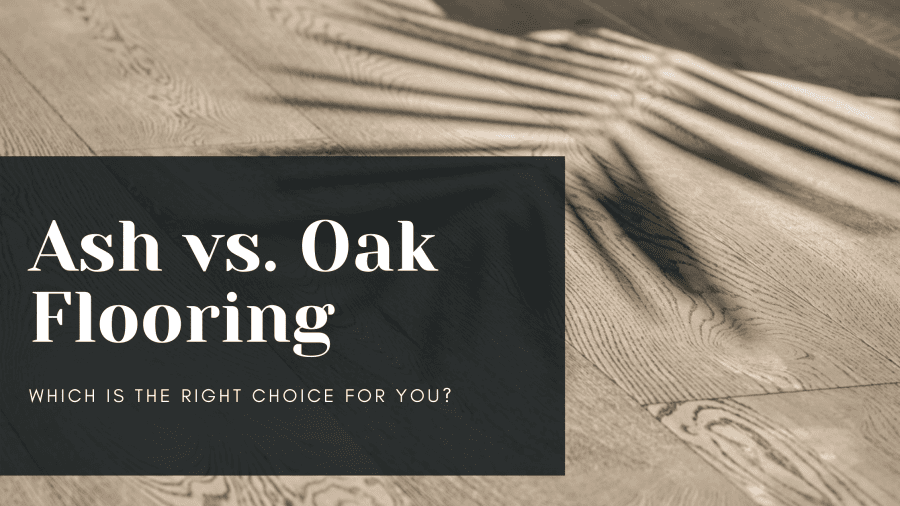Ash vs. Oak Engineered flooring – which one should you go for?


Ash vs. Oak Engineered flooring – which is the right choice for you?
The most common trees used for Engineered Hardwood are White Oak, Ash, Red Oak, Walnut & Hickory. Engineered Oak and Ash however stand out as being one of the most common choices buyers make. There are various different factors that go into considering why either would be a better fit for you, for example, the price, hardness of the wood, finish, wood patterns, etc. Keep reading below and hopefully, we have some of the answers you have been looking for.
Hardness
Ash is a very hard, durable flooring. It ranks 1320 on the Janka Hardness scale – which is higher than oak, beech, or heart pine. Ash is not as hard as maple or hickory which means it’s much easier to cut. Ash also remains smooth under friction not becoming splintered or rough to the touch.
The hardness of the tree is a factor in being resistant to damage along with the chosen finish. Oak is a popular choice primarily because of its widespread availability, and it is particularly resistant to scratches and dents making it a popular choice for high traffic areas; it is also almost impermeable to water and other liquids making it a popular complement to water prone areas in any infrastructure. Oak floors also have high levels of tannic acids making them resistant to fungus and insects.
Versatility
Ash is a wonderful choice for lofts and other open spaces. This is because the elastic nature of the wood makes it an excellent shock absorber helping to cut down on echoing footsteps in an open area. Having said that, Ash flooring can complement any contemporary space perfectly. Oak has been a popular choice for high traffic areas – so if you have a busy household or high footfall oak is a much better solution than Ash.
Finish
Oak is in most demand however Ash is growing to be more desirable with a cleaner look. Ash has a grain design similar to Walnut, accompanied with the hardness of Oak – bringing in the best of all worlds! Ash is mostly chosen for its naturally light tones grains, unlike other floors that need to be stained to be lighter. The natural light tones and clean grade of Ash accompanied with it’s wide planks can make any space look much brighter and bigger.
Oak flooring can be found in myriad colours ranging from dark tones to really light wood accompanied with very pronounced grain patterns unlike Ash, and can be stained to any color or style to match your decor and style preferences.
Cost
Oak and Ash are comparable in costs. However, considering its wide availability and range of durability buyers might find more affordable options in oak. The cost however depends on various things, like the Grade of veneers- cuts from the inside of the tree produce more cleaner looking wood floors whereas cut from the outer parts produces more knots and natural grain patterns: AB (most refined and clean cuts), ABC(mix of refined and less refined cuts), ABCD (least refined – more knots and natural grains) etc., Grain patterns also determine the price and are determined by the method of cutting the tree, for example, Plain sawn cuts, Quartersawn cuts, Rift sawn cuts and Live sawn cuts.
Maintenance
All engineered hardwood floors require regular maintenance of sweeping, vacuuming and mopping. Engineered Hardwood is water-resistant however not entirely waterproof, so both ash and oak need to be taken care of for any water spills or water leakage. Oak floors darken and change colour over time, however, Ash floors appear to retain their lightness if finished with a clear coat.
So there you have it. If you’re ever caught up in a dilemma between Ash & Oak flooring, I hope this article will help you decide one way or another! However, if you’d like to discuss the options further don’t hesitate to reach out to us. At Percy John Flooring, we’re always happy to assist you in making a perfect choice.

